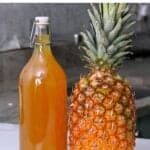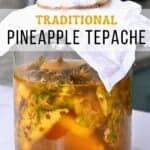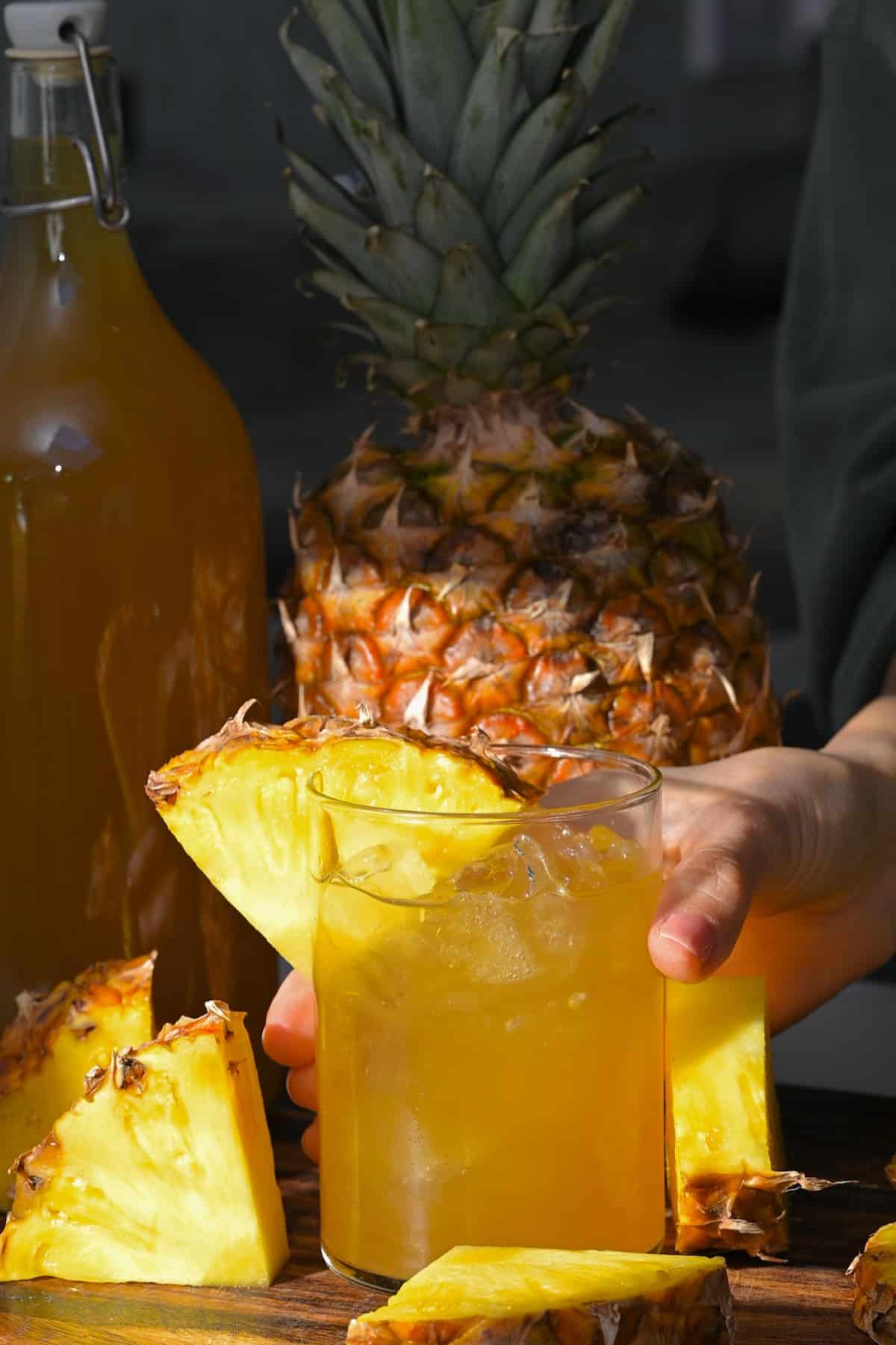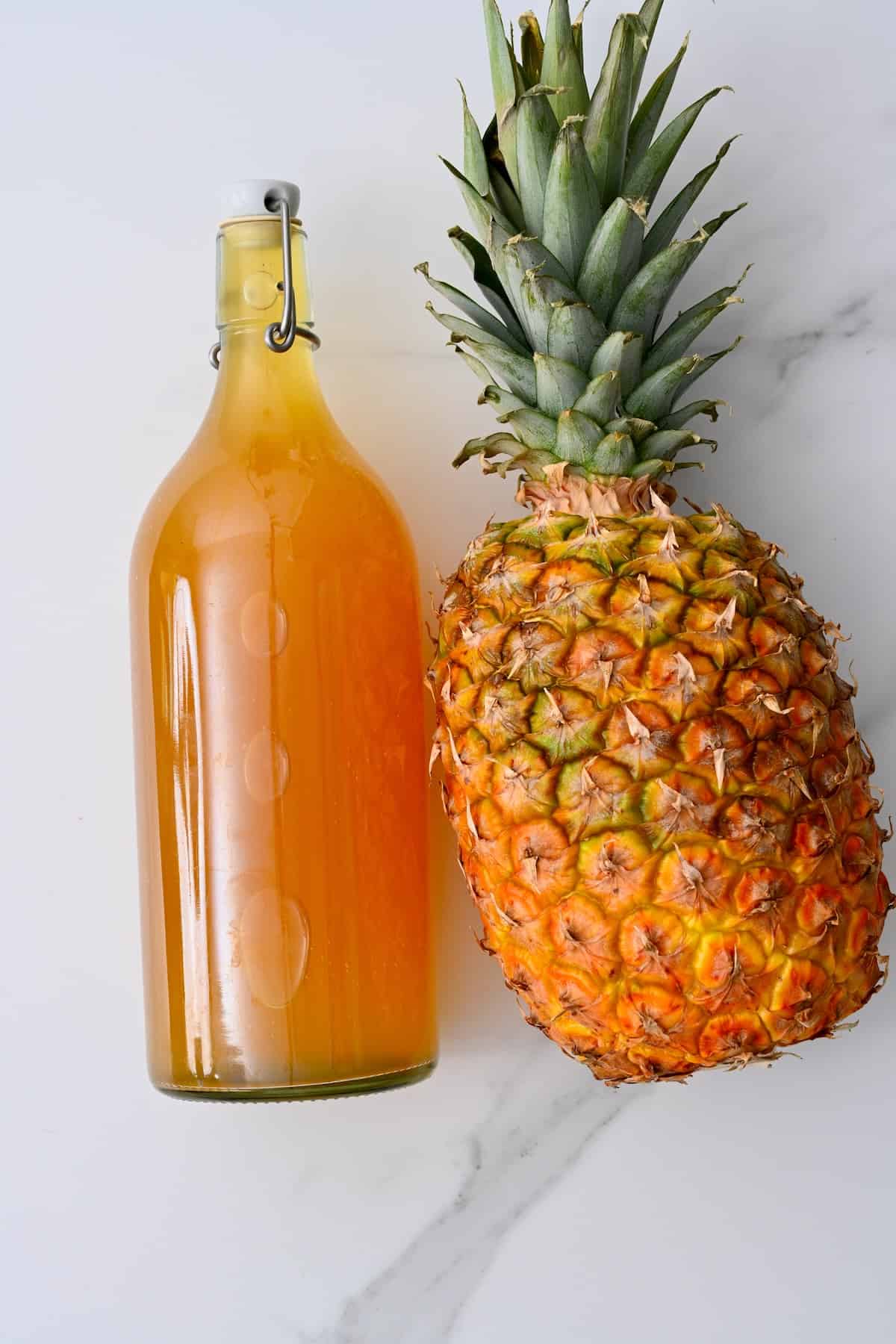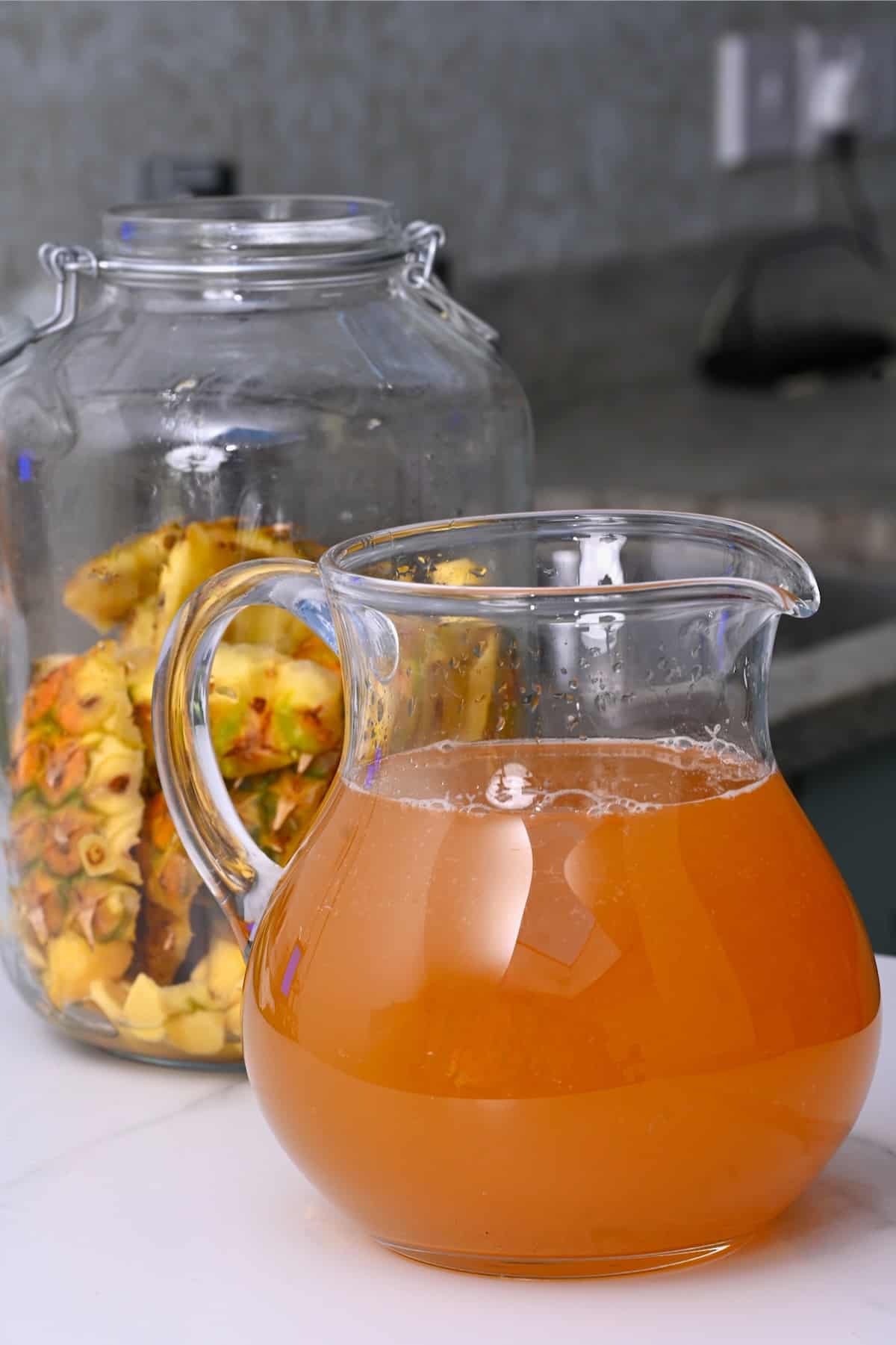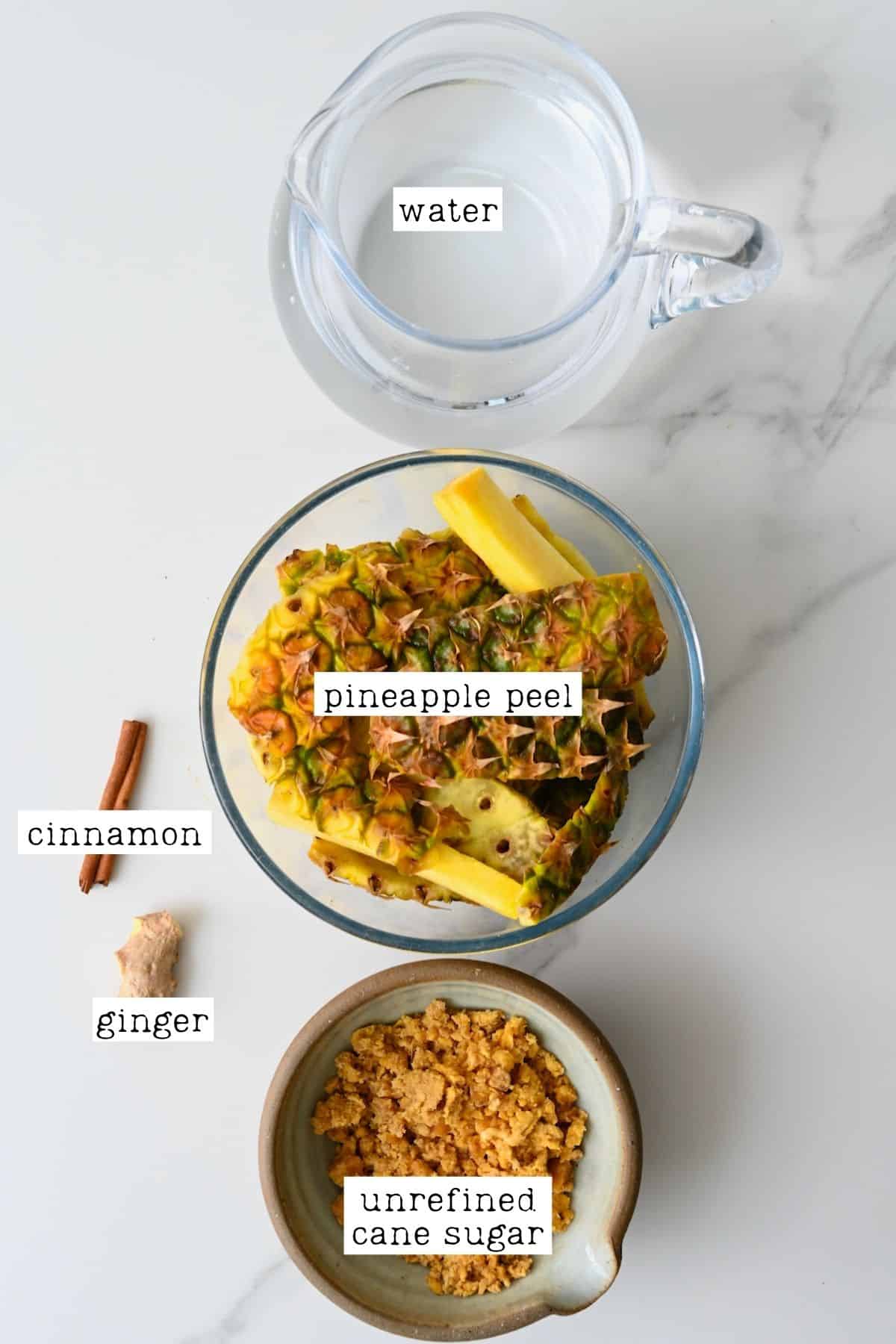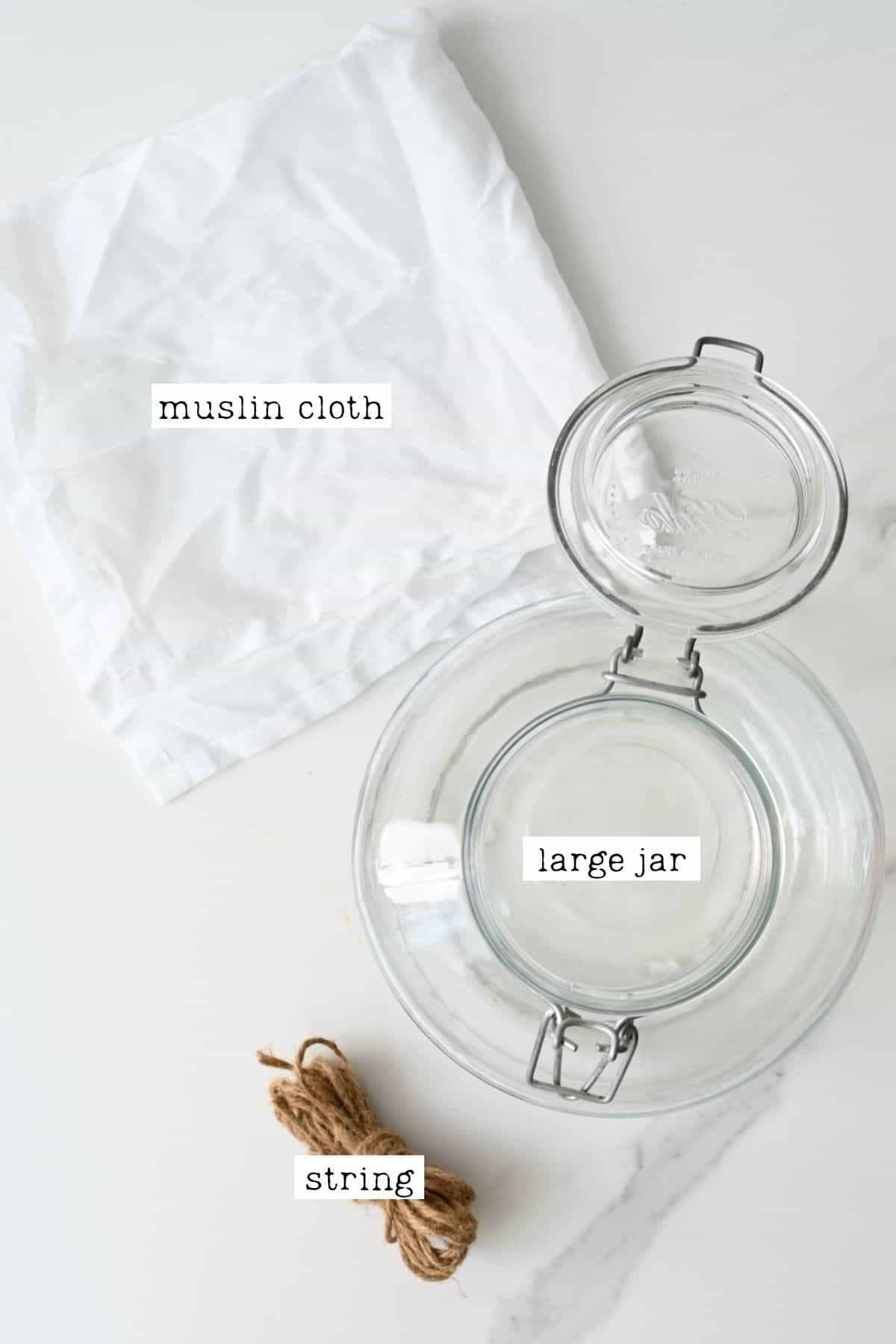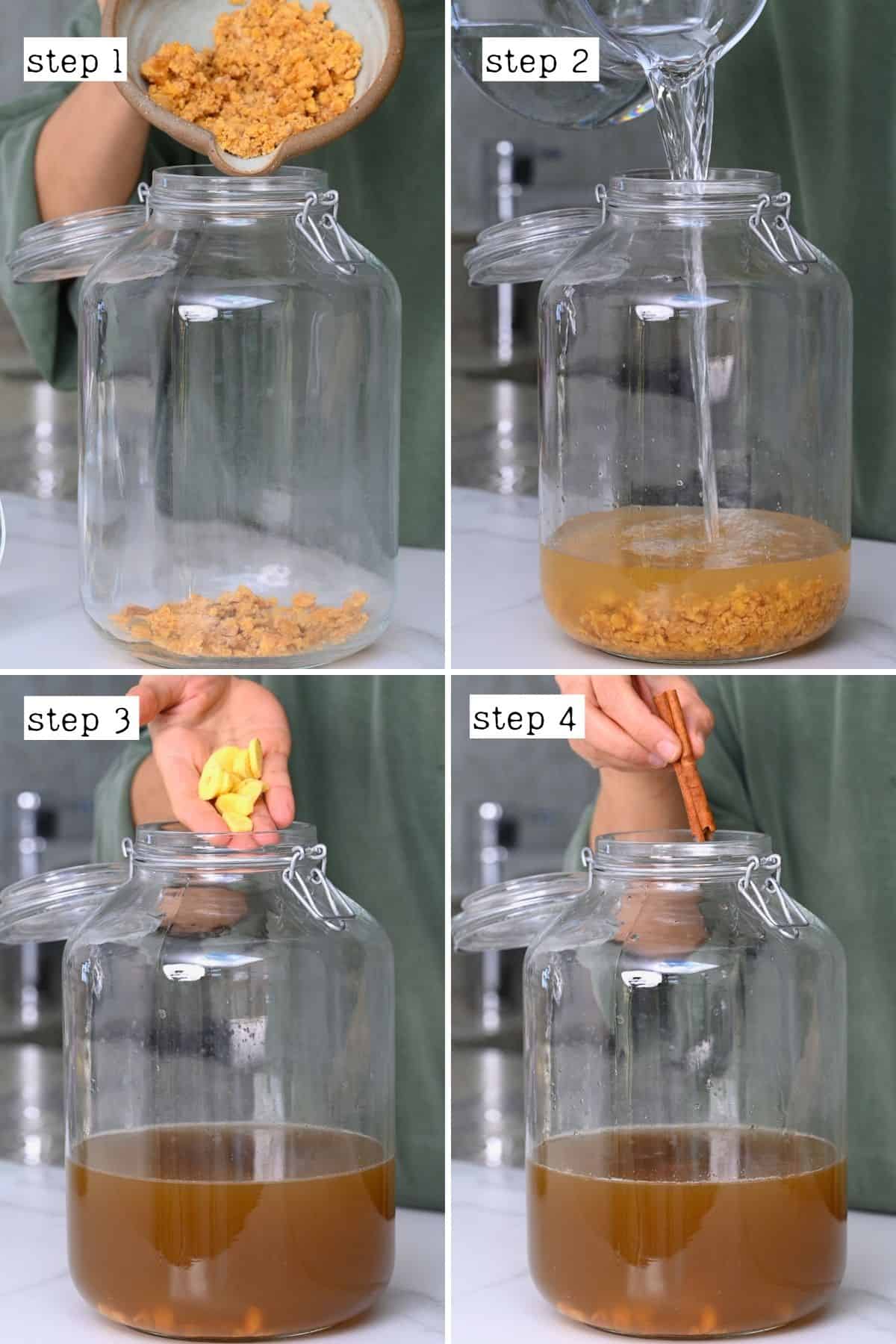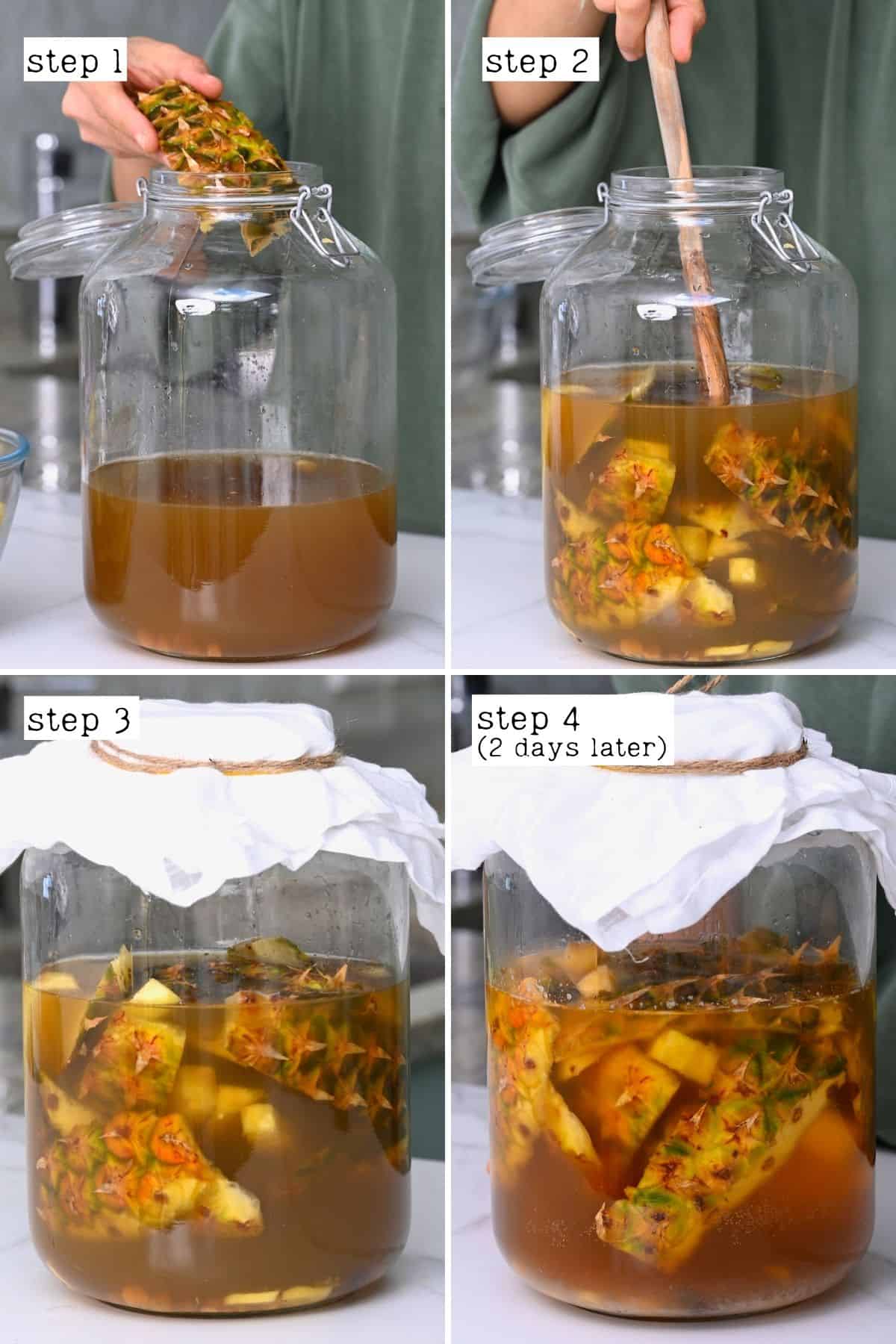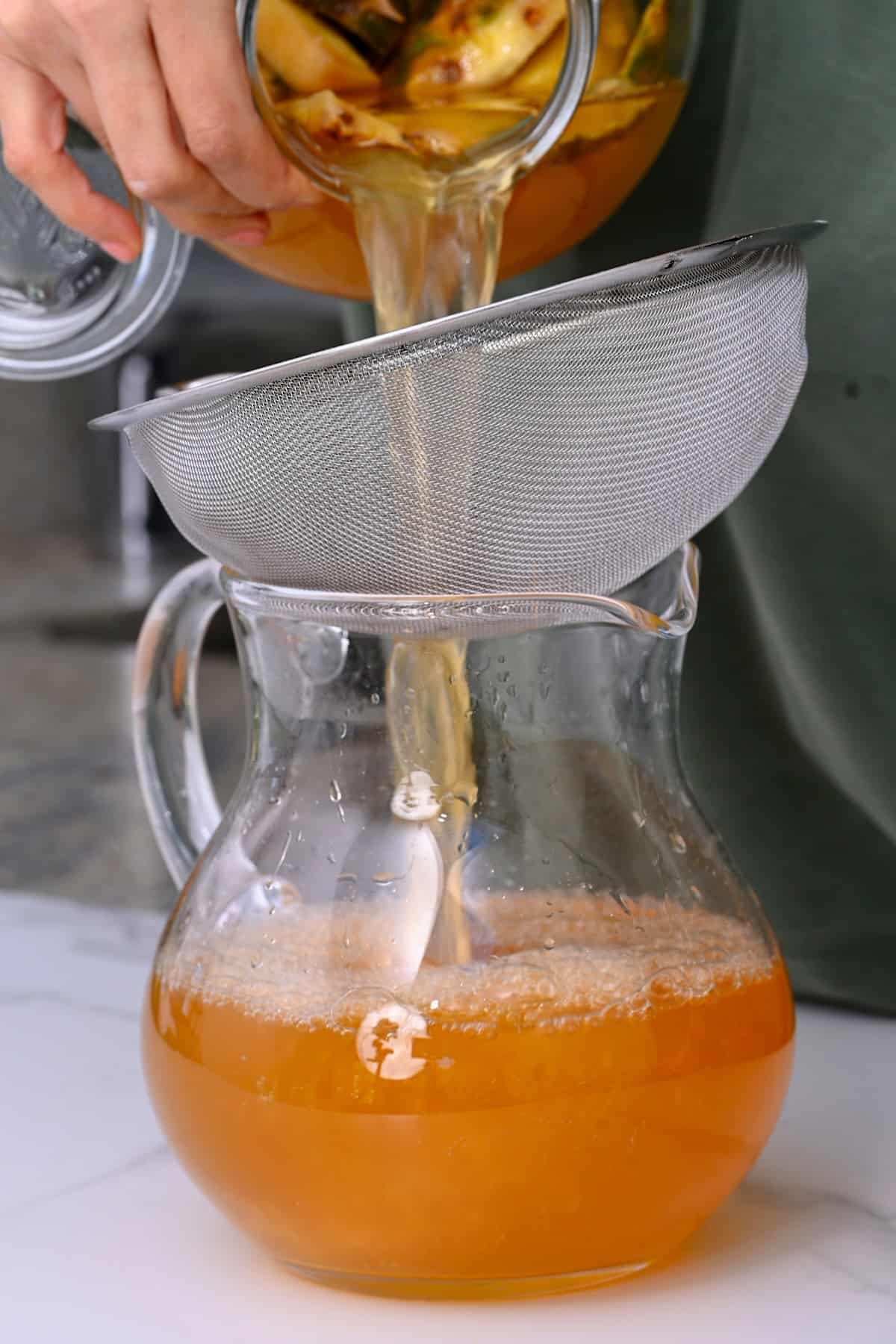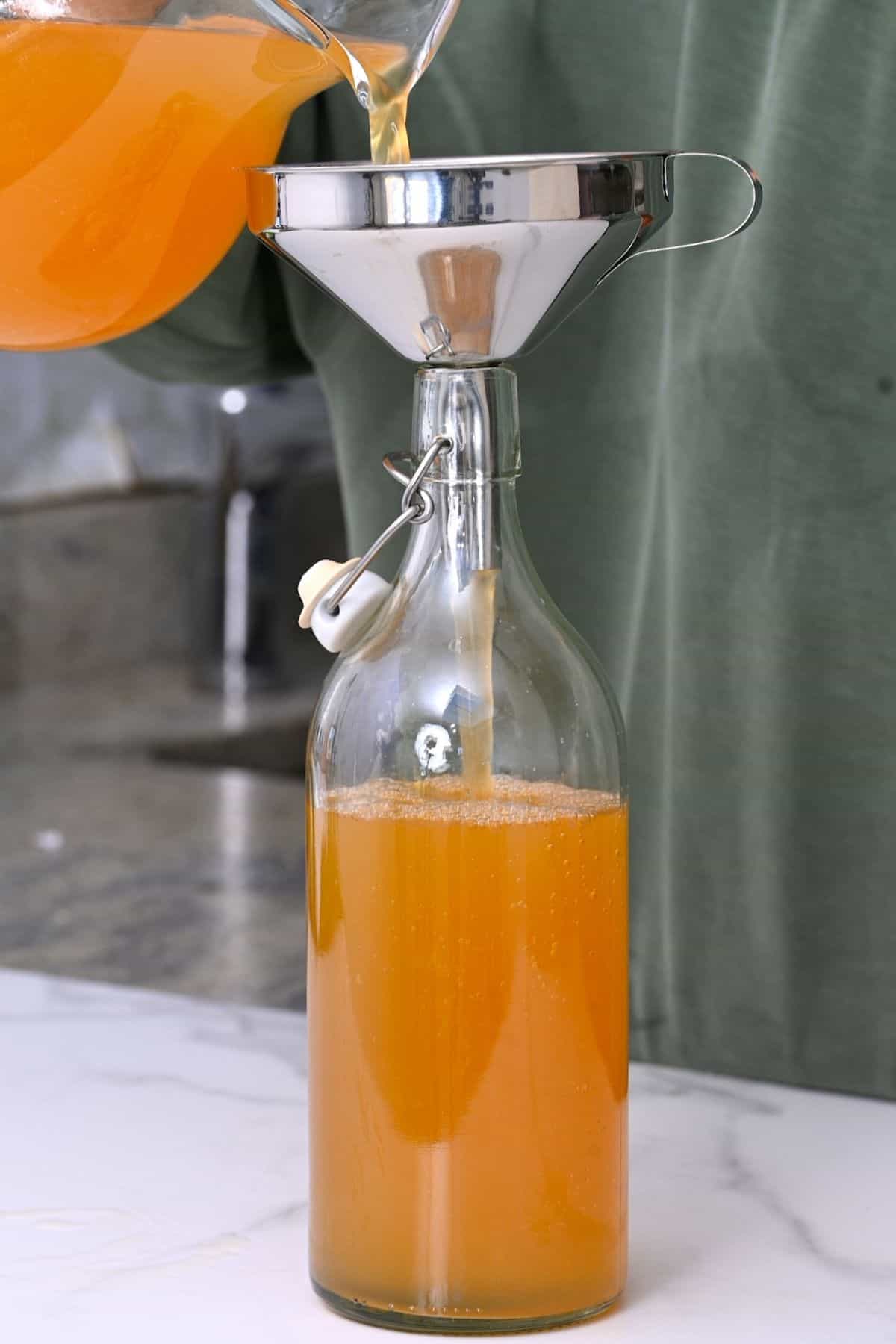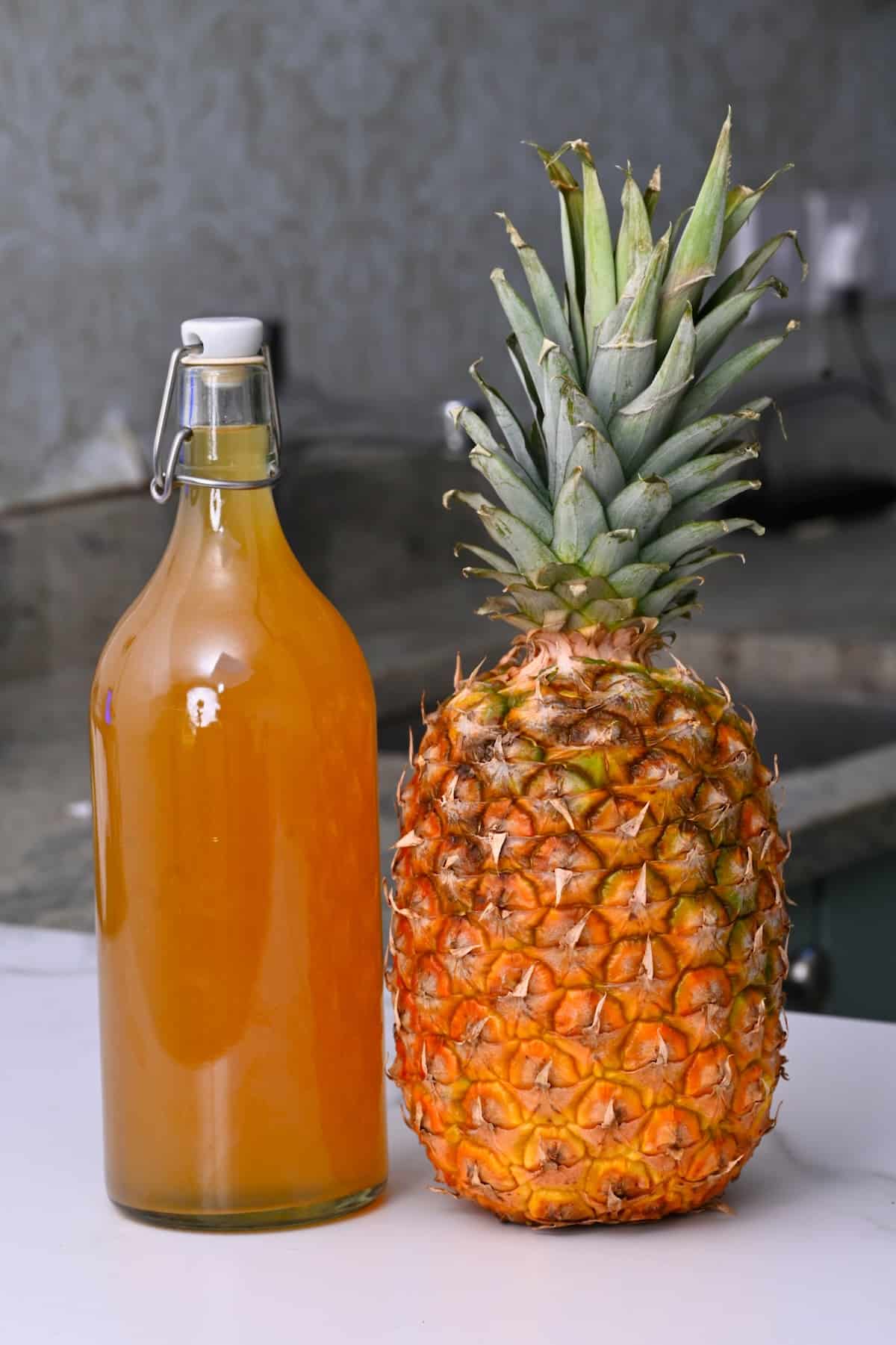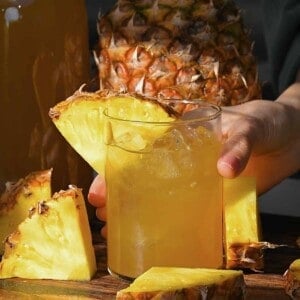Even though the weather here in the UK is more blustery winds and rain than warm sunny days, I’m really excited to share this method for refreshing, summery tepache de piña. Having recently posted my top methods for how to cut a pineapple and how to juice a pineapple, I was left with a BIG pile of pineapple skin, core, and other cut-offs. While part of that went towards a soothing warm pineapple skin tea, the remainder was used instead for this Mexican fermented pineapple drink. Once prepared, this fermented pineapple juice is packed with probiotics to help promote a healthy gut and digestive system. More so, the pineapple skin helps to infuse it with several vitamins and minerals. Yet it’s also fairly versatile and can be flavored in several ways and/or even be used to make tepache cocktails. Now that’s a win-win!
What is Tepache?
Tepache is a popular Mexican fermented pineapple drink (also called pineapple beer). It’s made with the peel and rind (often the core, too) of pineapple, sweetened with unrefined cane sugar (or brown sugar), and left to ferment for several days until you’re ready to strain and serve it chilled. The result is a very mildly alcoholic fermented drink that is sweet, refreshing, ever so slightly alcoholic, bubbly/fizzy, and a little “funky’ – somewhere between kombucha, soda, and something alcoholic like beer. It’s perfect for enjoying on warm summery days (or year-round, in my case). In Mexico, tepache de piña is a popular street vendor option sold in plastic bags (with a straw) or clay mugs. However, the popularity of this tepache drink has now reached other parts of the world and is now sold in juice bars and made at home like this tepache recipe. If you want to enjoy more pineapple drinks, you might enjoy this simple pineapple juice, pineapple lemonade, pineapple orange juice, or pineapple ginger juice!
The ingredients
This pineapple tepache recipe only requires a few key ingredients, including:
Pineapple: this Mexican pineapple drink relies on the pineapple peel (and core) rather than the flesh. Use a ripe organic pineapple (organic will contain more natural yeast and is better for consuming without any “nasties”) and follow these steps for how to chop and core a pineapple. Sugar: I like to use unrefined cane sugar (piloncillo is best, but jaggery or muscovado would also work). However, coconut sugar or brown sugar would also work. For a sugar-free version, use the sweetener of your choice (like erythritol/Swerve). Ginger: to provide zing and also improve fermentation. Cinnamon: it’s best to use a cinnamon stick rather than powder for infusion without grittiness. Water: use filtered if preferred, but I often use tap water here in the UK.
You’ll also need a large pitcher, muslin cloth (or thin kitchen towel), and some string (or a large elastic band)!
Optional add-ins
Here are just a few simple ways to adapt this tepache recipe with optional add-ins. Let me know in the comments what else you add.
Cloves/cardamom pods: add just a few whole cloves/ cardamom pods for extra spice. Citrus juice: squeeze in some fresh lemon or lime juice for added zing after the fermentation period. Chili: a small amount of chili will increase the “punch” of this pineapple fermented drink. Other fruit: for extra flavor, you could add some apple slices, mango, or orange (with peel). Coconut water: when serving, instead of diluting it (if you want to) with water, you can do so with coconut water. Beer: adding 1/2-1 cup of beer in place of water can help adjust this to a more alcoholic pineapple beer.
How to make tepache de piña
Step 1: Prepare the Pineapple
If you haven’t already done so, first wash, peel, and core the pineapple. You can use the pineapple flesh to turn into juice, make pineapple lemonade, add to this pineapple cucumber salad, and more!
Step 2: Combine the Ingredients
Add the water and sugar to your pitcher and stir well. It will dissolve easiest in warm water, but if using that, it’s important to allow it to cool entirely before adding the pineapple rinds. Then thinly slice the ginger and add it to the jug along with the cinnamon and pineapple peel, pressing it down beneath the water.
Step 3: Leave to Ferment
Cover the pitcher with the muslin cloth (or thin kitchen towel/dish towel) and secure it with the string or elastic band. This allows the fermented pineapple juice to breathe while keeping out any nasty critters that like to find their way into fermenting goods. Set the tepache drink aside for between 1-3 days, so it ferments lightly at room temperature. The time needed for the fermentation will vary based on the temperature, climate, ripeness of the fruit, etc. I recommend checking on it first at 12 hours (look to see if white foam has formed on top/if it’s bubbling), then again at 18 hours, 24hrs, etc. The longer it ferments, the more yeasty/vinegary and less sweet it will become. When you check on the fermenting drink, remove any white foam from the top of the drink with a clean wooden spoon. Finally, sieve the solids from the pineapple tepache, refrigerate, and enjoy! Serve it over ice, dilute it with additional water, or even add more sweetener if preferred. You can also make tepache cocktails by combining it with tequila, rum, vodka, etc.
OPTIONAL Second Fermentation
Like kombucha, after the initial fermentation, you can transfer the tepache to an airtight container (or multiple containers), which will seal in all the bubbles and make for a carbonated version of this tepache recipe. Using a funnel, transfer the tepache to bottle/s, leaving 2-3 inches of headspace at the top of each bottle. Then set it aside once more, at room temperature, for 1-2 days. Check on it at 12 hours, opening the lid to test the carbonation, then increase if needed. If you live somewhere particularly warm, this stage will happen faster, so I recommend checking at the 6hr mark. Once the tepache de piña has reached your desired level of carbonation, transfer it to the fridge to slow down the fermentation and enjoy! During this time, the drink continues to ferment, but at a slower rate. For that reason, it’s strongly advised that you “burp” the container every day to release any excess air. Otherwise, the bottles can explode (as a kombucha maker, I know this from experience, unfortunately…).
How to store
As soon as the fermentation period is over, transfer the tepache de piña (pineapple tepache) to the refrigerator and store it for between 7-10 days. It will continue to ferment during this time, so the flavor will change the longer it sits.
Recipe tips and notes
Use a sterilized container: make sure the jar/pitcher is thoroughly clean, or it can affect the fermentation. Avoid reactive utensils/tools: it’s best to use glass/ceramic jars and wooden spoons and avoid metal and any reactive materials. Cover the pitcher securely: I’ve found that several critters love to find their way into fermenting goodies, so make sure you securely secure the muslin/kitchen towel. Don’t over ferment: as stated above, if the tepache drink is left to ferment for too long, it will become pineapple vinegar. However, if you accidentally leave it too long, then no worries as you can still use this vinegar for various uses, including pickling, etc. Ensure the peels are fully submerged: if they rise above the liquid, there’s a chance for them to grow mold and ruin the entire batch. You could use something to help weigh them down if necessary (if you don’t have fermenting weights, a Ziplock filled with water could work in a pinch). Adjust the amount of sugar: the longer it ferments, the sourer this Mexican pineapple drink becomes. So feel free to add extra sweetener when serving, if preferred. Leave a “starter”: once you’ve made your first successful batch of this tepache recipe, save around 4 oz (½ cup) or slightly more to work as a “starter” to encourage the next batch to ferment quicker. You can continue to do this with each new batch.
More refreshing drinks
Lebanese Mint Lemonade Bloody Mary (Classic or Virgin) Refreshing cucumber lemonade Best Mangonada Recipe (Chamoyada) Easy Fruit Punch
Or you might enjoy browsing through this list of 40+ delicious summer drink recipes! If you try this tepache recipe, I’d love to hear your thoughts/questions below. Also, I’d appreciate a recipe card rating below, and feel free to tag me in your recipe recreations on Instagram @Alphafoodie!
